Table of Contents
Lead is a a silent and insidious menace to human health; one that most people know they should generally avoid but often still flies under the radar of human detection.
Stanley cups for instance have recently been a viral topic across all major social media platforms due to the recent discovery that they contain lead. This had led (no pun intended) to lead being thrust into the spotlight of common concern, again as it has several times throughout history, with social media accounts based around the discovery of lead contamination growing massive followings overnight with their vigilante-like efforts of testing common household items for lead.


Although efforts to eliminate the widespread use of lead in everyday products like gasoline and paint have been made incrementally throughout the 20th century, we are certainly not a lead-free society.
The Global Lead Pollution Problem
First of all, let it be known that lead is a naturally occurring substance found in many places worldwide.
Volcanic eruptions can distribute lead particulate into the atmosphere, and natural weathering of the Earth’s crust can free lead from rock and mineral formations into the surrounding environments.
These natural distributions of lead are relatively insignificant though to the major contributor of lead exposure – human activity.
Human Contribution to Global Lead Pollution
Human activity is the driving force behind the historical and continued lead pollution worldwide.
Extensive mining operations extract lead from the earth and use the heavy metal in many industrial processes like chemical tank liners, batteries, and radiators, though less direct lead pollution is a major factor as well. Waste incineration and a multitude of other anthropogenic (human-driven) actions release substantial amounts of lead into the environment. The production and disposal of lead-acid batteries that are used in virtually all car batteries are another often overlooked significant contributor to the global lead pollution crisis.
A Hard Pill to Swallow


The consequences of how we have modernized our society, unfortunately, extend far beyond immediate environmental impacts, affecting air quality, soil health, and water safety on a global level. This ubiquity of this toxic metal in turn has negative downstream effects on a huge amount of biological organisms, both human and non.
The uncomfortable reality is that most of the lead pollution we are currently experiencing all around the globe would not be an issue if we humans did not free it from the Earth’s crust in the first place in our haste for technological and industrial development. Even if industrial corporations had simply been more mindful of the potential environmental impact of liberating and redistributing a neurotoxic metal from and around the Earth, we would not be facing the grim reality of a global pollution crisis.
Fully facing and acknowledging the impact of our industrial footprint on lead concentrations in the environment is crucial in devising sustainable solutions to mitigate the far-reaching health and environmental consequences that come from exposure to this pervasive heavy metal.
Environmental Consequences of Lead Pollution
Lead contamination poses a catastrophic threat to ecosystems and agricultural lands, as lead does not break down via biodegradation like other pollutants. The distribution of this toxin directly disrupts the delicate balance of flora and fauna, one that people often forget we are fundamentally a part of.
Soil Contamination
Soil that has been polluted with lead poses significant environmental risks with far-reaching consequences.
Once deposited in the soil, lead persists for many years and gradually accumulates over time, presenting major threats to ecosystems and human health and compounding in toxicity as it disrupts biological systems.
Soil contaminated with lead directly impacts plant life in the following ways:
- Disruption of nutrient absorption
- Inhibition of ATP production (adenosine triphosphate – the source of energy for use and storage at the cellular level)
- Lipid peroxidation (a harmful process that affects membrane processes and ultimately leads to cell death)
- DNA damage
- Inhibition of seed germination, root elongation, seedling development, plant growth, transpiration, chlorophyll production, and water and protein content
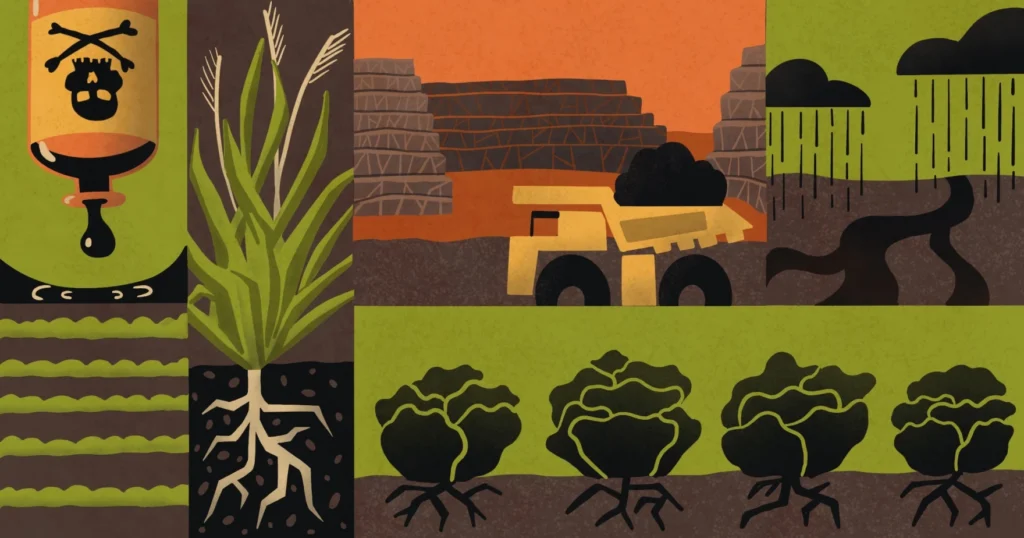

This disruption cascades through the food chain, affecting animals in similar ways via continued lead toxicity but also less directly through the reduction of bioavailability nutrients in polluted plant life, and ultimately, humans who consume contaminated and malnourished produce and meats.
Water Contamination
Lead-contaminated soil can contribute to water pollution as rainwater washes away the metal-laden soil, leading to contamination of greater bodies of water, though contaminated soil is not the only source of water contamination.
Industrial processes play a major role in directly contributing to lead pollution. Improper disposal of waste and other byproducts from various industries can lead to lead leaching directly into various waterways.
Industrial processes also often pollute our waterways less directly via the water cycle; atmospheric accumulation of lead particulate eventually is distributed into major bodies of water when these deposits are released from clouds in the form of lead-polluted rain.
Global Dispersion
Lead pollution is not confined to localized areas due to the above-mentioned atmospheric accumulation; wind can carry airborne lead particles over great distances, far and wide from the original source. This global dispersion creates a hyper-complex lead pollution problem, emphasizing the need for international cooperation in addressing its far-reaching effects.
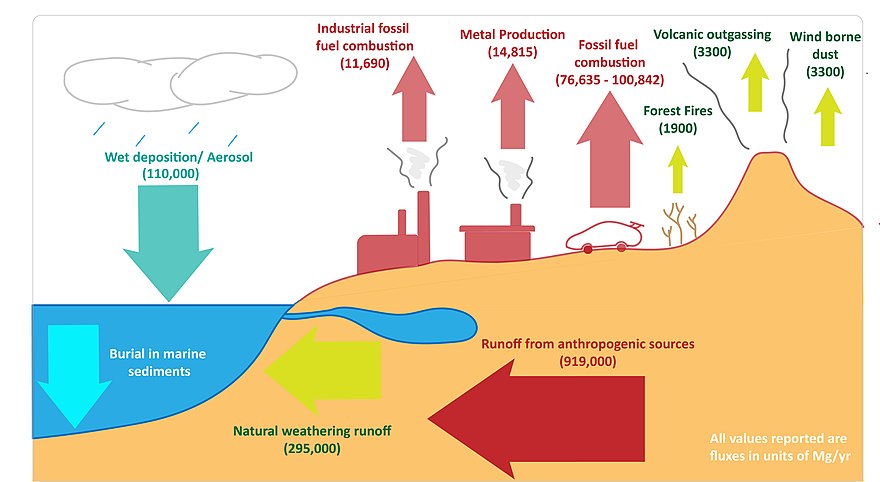

The environmental effects of lead-contaminated soil extend beyond immediate ecosystems. There is a crucial need for continued comprehensive remediation efforts to safeguard biodiversity, protect water resources, and mitigate the potential health risks associated with lead exposure in both wildlife and human populations.
Human Health Impacts of Lead Pollution
Global lead pollution has profound and far-reaching health consequences.
There are an estimated 5.5 million premature deaths annually attributed to lead exposure, resulting in an estimated social cost of around $6 trillion US dollars. Communities all around the world face varying degrees of risk, with more vulnerable populations of the impoverished often disproportionately affected.
Neurological and Developmental Effects
Children, in particular, are highly susceptible to the detrimental impacts of lead exposure. Even low levels of lead can impair brain development, leading to cognitive issues, learning difficulties, and behavioral disorders. The implications of early childhood lead exposure can be severe, affecting individuals throughout their lives.
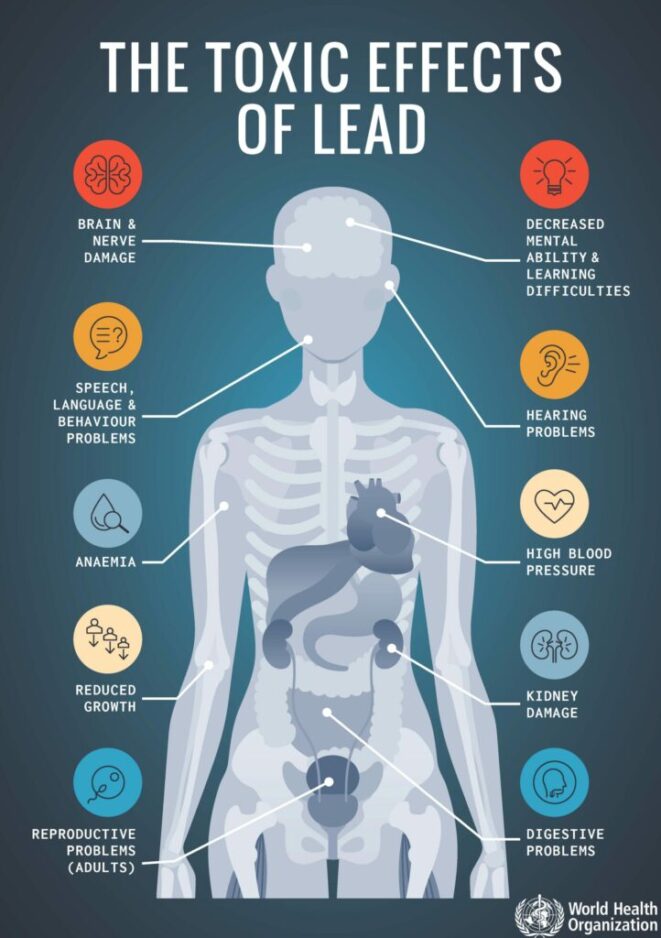

Cardiovascular Risks
Cardiovascular disease is one of the leading causes of death in the United States for all demographics. Recent studies highlight the link between lead exposure and cardiovascular disease. Lead poisoning has not only been correlated but inferred to be a causal factor in hypertension, a condition that leads to most aspects of cardiovascular disease. Chronic exposure, even at low levels, increases the risk of cardiovascular issues, contributing to a significant number of deaths.
Historical Reliance on Lead
Extraction of lead from the Earth is an age-old practice that began thousands of years ago; it was one of the very first metals ever used by humans.
Lead’s historical significance is evident in its diverse applications. Used by ancient civilizations for its malleable properties, lead found its way into an array of products that significantly impacted daily life. It has historically been used in ancient coins, cosmetics, ceramics, and bullets.
Health risks have been associated with lead exposure since the Roman Empire when it was even commonly used to sweeten food and distribute water, but reliance on this heavy metal has strangely continued.
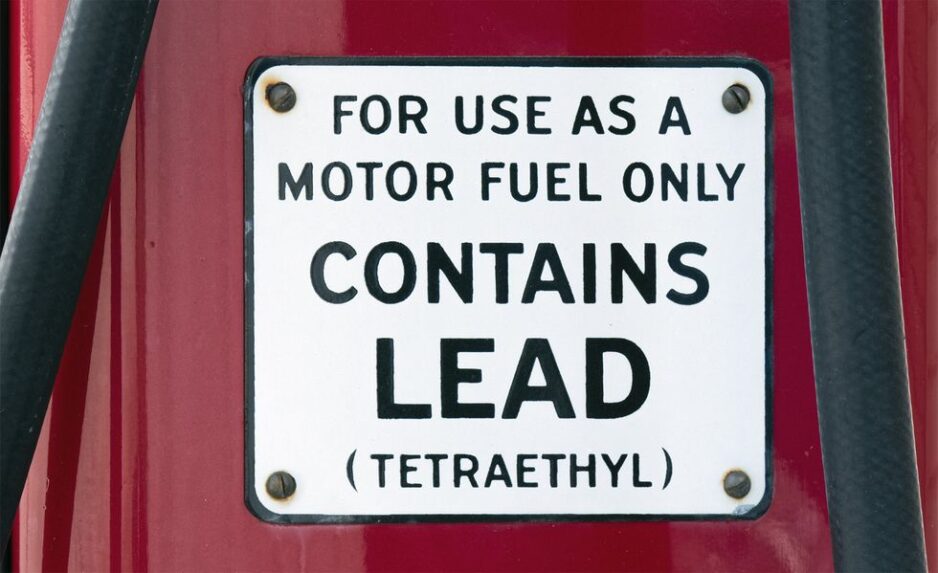

Lead’s influence extended beyond Roman use, to the pursuit of alchemy in the Middle Ages to the 20th-century addition of lead to gasoline. By the mid-20th century, the United States had emerged as a major producer and consumer of refined lead, depositing millions of tons into the environment through the fuel used to power the nation’s vehicles.
It wasn’t until the late 20th century, spurred by environmental awareness and public health concerns, that regulatory measures were implemented.
Reduction of Lead Usage
The reduction of lead usage represents a commendable yet complex journey, marked by notable successes and persistent challenges.
Clean Air Act and Regulatory Measures
The United States took a significant step with the establishment of the Clean Air Act, prompting the Environmental Protection Agency (EPA) to implement regulations in 1973 to phase down lead in gasoline. However, the shift away from leaded gasoline took decades, with a global ban on its sale for vehicles achieved only by the early 2000s.
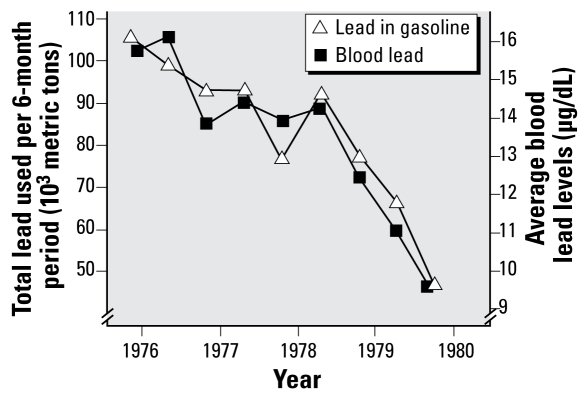

In the years after the Clean Air Act, blood levels of lead in the general population decreased by 93.6%, but an estimated 500,000 children aged 1 to 5 years have blood lead levels at or above the blood lead reference value of 5 μg/dL that were established by the Centers for Disease Control and Prevention, and over half of the US population has been exposed to high levels of lead in their early childhood.
Persisting Challenges
Although the elimination of lead in automobile fuel was undeniably a beneficial step, the same standards were never applied to fuel used in airplanes which are currently the largest contributor to lead poisoning in the United States.
Despite regulatory efforts, challenges endure in our efforts to mitigate the consequences of lead’s historical use. Various products containing lead have left lasting impacts, especially evident in vulnerable communities and neighborhoods characterized by aging infrastructure. The remnants of leaded gasoline in soil and older structures pose ongoing threats to environmental and public health.
Moving Forward
Even though the toxicity of lead was recognized and recorded as early as 2000 BC, society still has an urgent need for innovation and regulation around this toxic heavy metal.
Tomás Guilarte, a prominent neurotoxicologist, often speaks out on the pressing need for broader regulations and a comprehensive reevaluation of testing protocols. Guilarte emphasizes, “There’s a lot more that needs to be done.” As we grapple with the consequences of our historical reliance on lead, the call for increased vigilance and immediate action becomes more pronounced.
Navigating toward a lead-free future demands a collective commitment to understanding and addressing the far-reaching consequences of this silent threat. The historical use of lead, intertwined with innovation and severe health consequences, requires sustained efforts and discussion. Ongoing research, strengthened regulations, and community engagement are crucial components of this multifaceted journey toward a healthier, lead-free environment.







